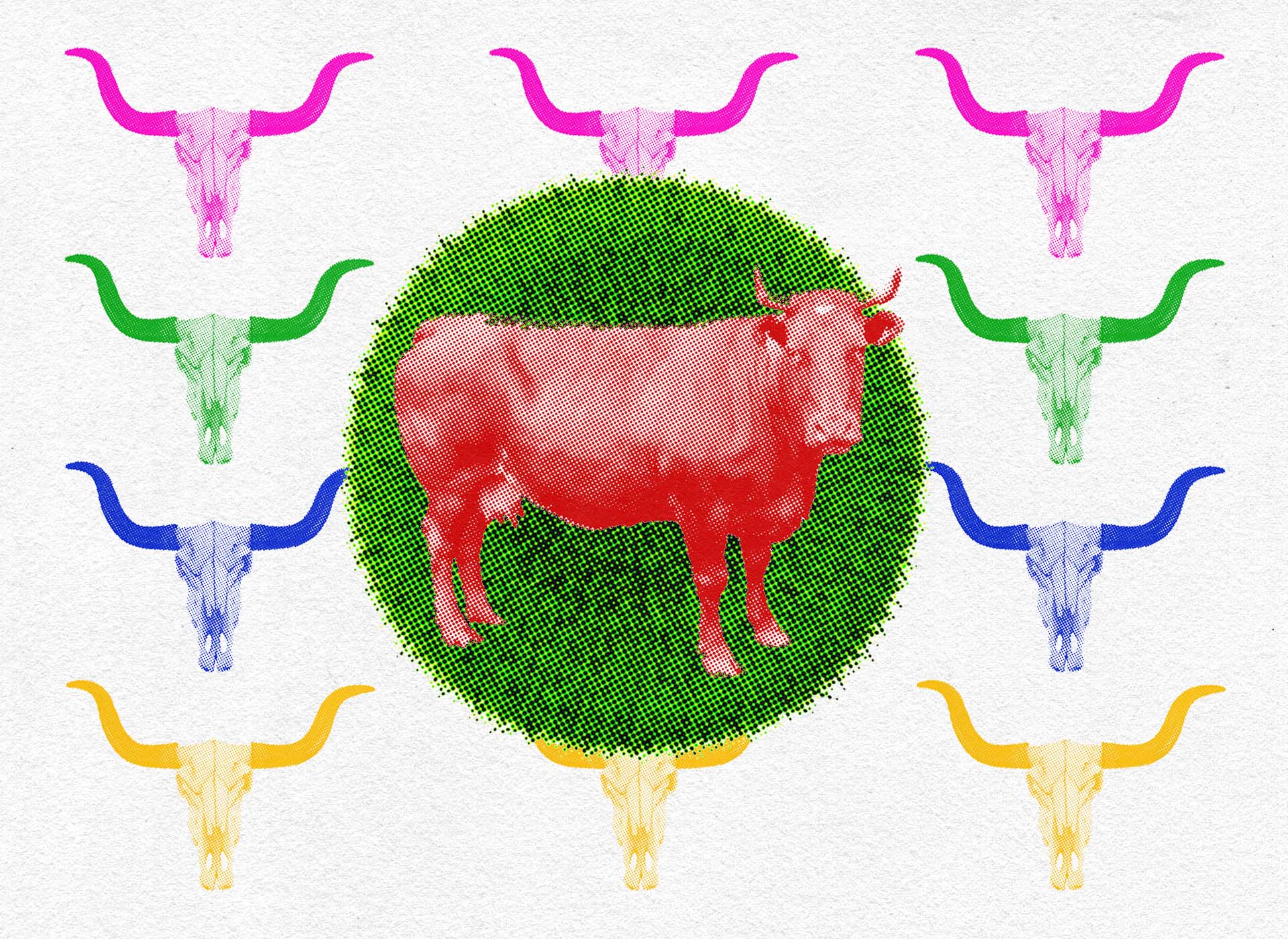
An Ode to Cattle
The cow’s role on the regenerative farm
Break the cow out of the factory farm, return it to its rightful place on the land, and restore the balance. How many ailments could we heal by doing this on a large scale? First of all, we would fortify our own crumbling health with toxin free and nutritious beef. Secondly, cattle in the hands of the regenerative farmer is the best tool we have for reviving the vast swaths of depleted American dirt. Thirdly, this would bring commerce and life back to rural America — they have the land, they just need to use it. Finally, this would act as a bulwark against the waning self-reliance of our citizenry; a return of power.
Commercial farming operations aggressively take from the land through cropping and haying — much of which feeds commercial beef. Each season they pull nutrients from the earth and give only chemical fertilizer in return, which is like an energy drink for the earth: the plant gets a temporary boost, but no real value is added. They’ve turned rich American soil into dirt and regenerative farmers are reversing the damage.
Some farmers are buying abused land, reviving it with ruminants — maybe a few outside inputs like seed or lime to speed up the process — then raising a healthy herd in a completely self-sustaining environment. Maximizing pasture health is the key to this operation and it just so happens that the herd is the ultimate pasture management system. They clip grass, knock down weeds, fertilize, and till. The farmer concentrates on this activity and runs it along pasture like you would mow a lawn. This is done by fencing off the herd in a highly mobile electric fence and moving it every two or so days so they get plenty of food and cause minimal damage. After covering the whole field, it’s back to the start where the growth is ready to be clipped again. Maximum pasture health requires an evenly managed pasture.
To pull this off, regenerative farmers, like Greg Judy of Green Pasture Farms in Missouri, are breeding cows that resemble the breeds of the pre-industrial age. They need a cow that thrives in the field and sun rather than the Tyson meat factory.
Here are some of the desired traits:
- The cow gets fat solely off forage rather than grain
- It’s small - 1000 lbs vs. the standard 1400 lbs - to protect the forage, especially during a rain
- It has a light-colored coat so it will actively graze in the summer sun rather than lie in the shade
- It has short legs because they’re less prone to injury.
These are low-maintenance cows. You get them on good pasture and they’ll make a good profit.
Once they raise soil health and the pasture has sufficient levels of forage, the regenerative farmer won’t need any more outside inputs, except maybe a mineral supplement, which is common. No grain, herbicide, pesticide chemical fertilizer, seed, hay, or mass administration of antibiotics, and no extra equipment or fuel to distribute these things. His pockets are fatter and his herd is healthier for it.
If only we could walk every sickly neckbeard that advocates for vegan meat through a regenerative farm. Not only would the sunlight on their translucent skin and the action of their atrophied leg muscles revive their trickling testosterone production, but they might see that the closed environment of the regenerative farm is as low impact as it gets.
If adopted on a large scale it could help rural America out of the opioid stupor that it’s been in after local commerce was snuffed out by Dollar General and Walmart, which, like Big Agriculture, have a leeching effect on communities. All of that land they are sitting on could provide jobs and create wealth.
What an exciting development in a world of waning self-reliance. The regenerative farm with the cow at the head of the pack is something we should all get behind. It’s a revolution in its early years.
Information provided by Fairfax Farms, TN
